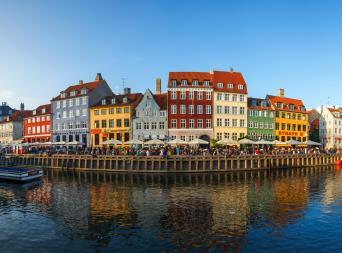European pension funds are increasingly seeking out properties that can be refurbished into core holdings as the demand for traditional core leads a supply shortage, according to the inaugural European Institutional Real Estate Survey (EIRES) by IPE.
The survey, conducted jointly with Invesco, questioned more than 80 European pension funds with €100bn in property about their investment strategy and also found that listed real estate had limited appeal, employed mostly as a way of diversifying holdings.
Together with their desire to “create core”, EIRES respondents also expressed a preference for direct investing – within both domestic and European portfolios – as it allowed for greater control over assets and therefore greater control over any risk emanating from the property.
Of the 83 pension funds, managing nearly €1.3trn in assets, 85.4% opted for direct investment in their domestic market, and only 12.2% decided to invest indirectly through fund commitments.
The survey noted: “WPV, the German auditors’ pension scheme, is including direct in its portfolio for the first time a bid to mitigate what it sees as the lack of control inherent in pooled funds.”
An even smaller percentage opted for domestic exposure through funds of funds and an equal amount, 1.2%, sought to invest in domestic property securities.
The survey added: “The correlation between market proximity and appetite for direct investment also explains the smaller, though still significant, gap between direct and fund investment in non-domestic European real estate.”
When investing in other European cities, more than half still invested directly, although the number of investors opting for funds more than doubled to 27.9%.
Real estate securities also saw a significant increase in popularity, and 19.4% said they would employ them to gain European exposure, while fund of fund investments only accounted for 1.5% of commitments, a marginal increase over how they were employed in a domestic setting.
The survey also found an overwhelming appetite for core property in both domestic and European markets, and some pension funds also looked to invest in core-plus properties.
More than 90% of funds said core properties were part of their domestic strategy, while 79.1% wanted this mirrored in their European ex domestic portfolio.
A further 5.5% viewed core-plus as key to their domestic strategy, leaving only 2.8% interested in value added – a figure that increased nearly fourfold when examining European strategies.
A value-added approach became increasingly more important the further from the domestic market the investment strategy shifted, resulting in only 76% of funds saying core was at the heart of their strategy in the US, falling further to 61% in Asia.
Instead, 15.7% of pension funds assets deployed in the US were in value-added strategies, rising to more than one-quarter in the Asian market.
Simon Redman, managing director of client portfolio management Europe at Invesco Real Estate, said the interest in value-added was something also found amongst its clients.
“We at Invesco have seen steady growth in demand for value-added real estate investments and continue to see significant opportunities in this area – particularly in the US and Asia,” he said.
Responses to EIRES also showed a varied approach to listed investments depending on the region to which the pension fund was seeking exposure, resulting in US REITs remaining popular and attracting an average of €1.8bn across the few funds opting for the approach.















